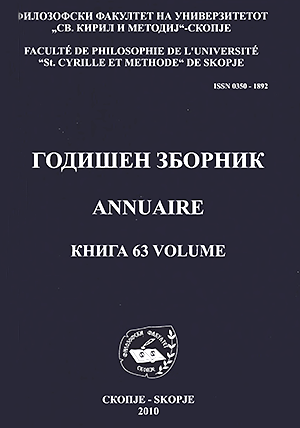LONELINESS, SATISFACTION OF THE CHILD AT SCHOOL AND FRIENDSHIP
DOI:
https://doi.org/10.37510/Keywords:
LONELINESS, SATISFACTION OF THE CHILD AT SCHOOL, FAMILY INTERACTION, PEER INTERACTION, FRIENDSHIPAbstract
Peer relations are not always accompanied by a feeling of pleasure. When a child cannot satisfactorily accomplish the relations with the peers, and the surrounding and thus satisfy its needs for belonging, love and intimacy, it leads to the occurrence of the unpleasant emotion called loneliness. Loneliness is a result of an unsuccessful social interaction. Satisfaction of the child at school determine filing of pleasure and adjustment of the child in school environment. It presented the measure of wellness at school.
In our research the basic question was: how are the family and peer relations (friendships) associated with the lonesome behavior and satisfaction of the child at school in mid childhood and early adolescence (3rd grade and 7th grade pupils), respectively. The family relations are shown through the following dimensions: satisfaction with the family, acceptance by the mother, acceptance by the father, rejection by the mother, rejection by the father, mother emotionality, father emotionality, mother control and father control. The dimensions of peer relations were: quality of the relations with the best friend, the satisfaction with the best friend, the assessment of the friendship reciprocity, the relations of three best friends with the pupil and vice versa, the acceptance by the peers. Dependent variable was the loneliness of the child at school and satisfaction of the child at school. 194 examinees were elaborated in the research. It included 3rd grade pupils (85) ;\nd 7th grade pupils (109).
The results were statistically processed by regressive analysis on two general factors family and peers (with their dimensions) ke predictors of lonesome behavior. For the 3rd grade pupils the regressive inalysis rendered the following factors as significant variables (p<0.05): (un)acceptance by the father, rejection by the mother, control by the father and quality of family interaction. These dimensions contributed to the explanation and prediction of the lonesomeness as 36% (R2). The results of the regressive analysis of the 7th grade pupils show a significant influence (p<0.05) by mother emotionality, while within the peer variables the significant one was the satisfaction with the best friend. They explain and predict the lonesome behavior as 42% (R2). The satisfaction at school (for the 3th grade child) is explained with 29% of mutual general factors (family and peers). But it's interesting for the 7th grade child, the family factor is more significant than peer factor, but the mutual factors are predicting the satisfaction at school 29%(R2).
An outcome shows that lonesomeness of the child in the school and satisfaction at school proved to be more influenced by the family relations than by the peer relations (for 3rd grade pupil’s only family variables explain lonesome behavior). The satisfactions of relation with the best friend significantly contribute to the lower lonesome behavior at the child, especially for 7th grade students.
Downloads
Published
Issue
Section
License
Copyright (c) 2010 Orhideja Shurbanovska

This work is licensed under a Creative Commons Attribution 4.0 International License.





